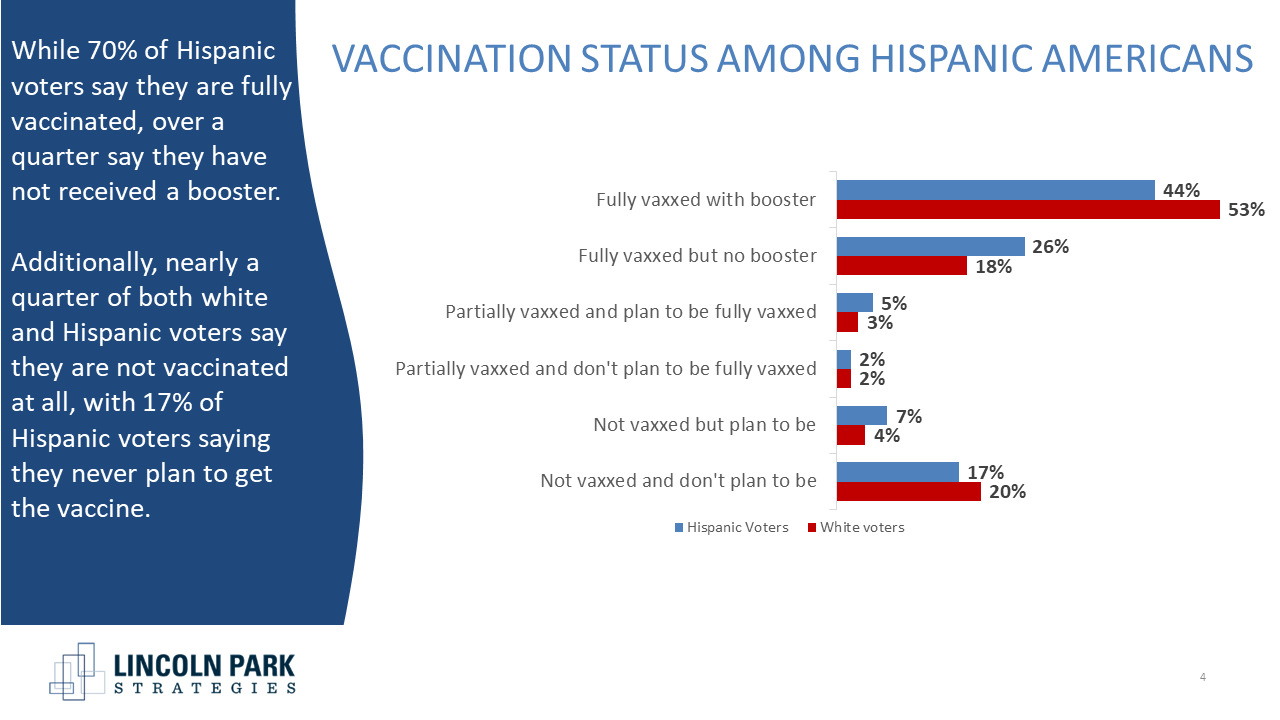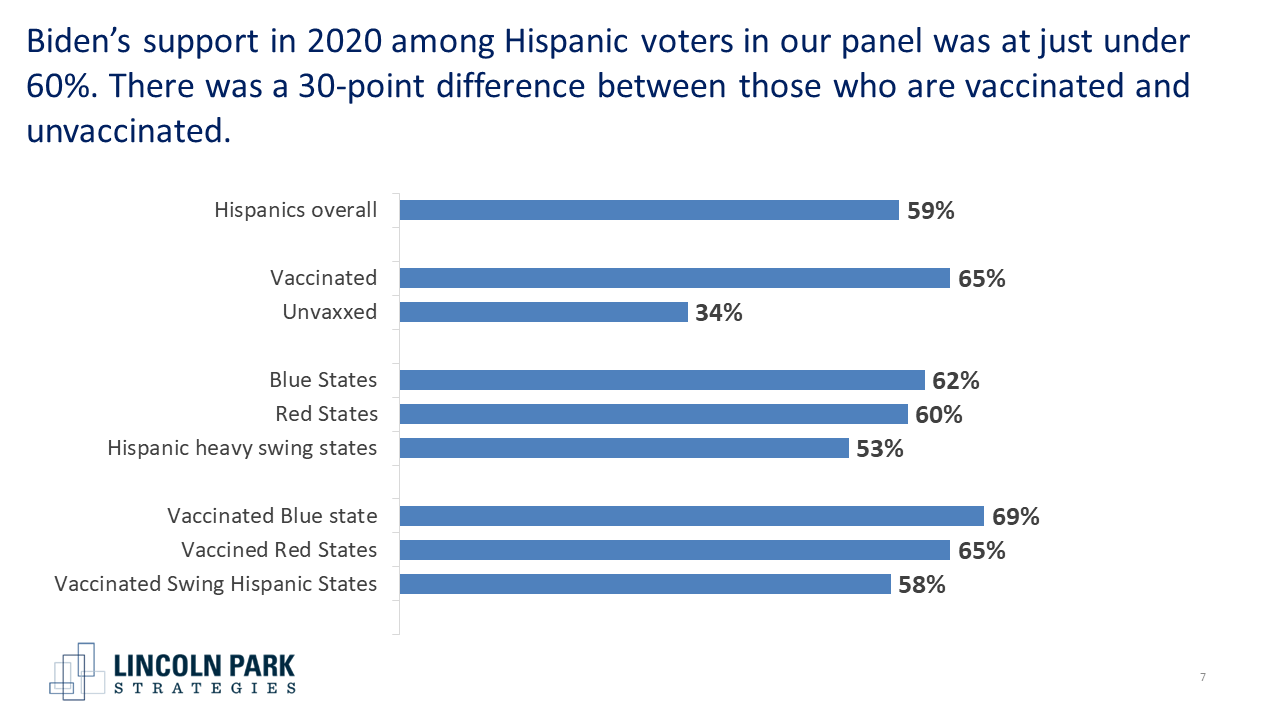There has been a good amount of chatter on this topic recently from credible and less credible outlets (not surprisingly coming to different views on how big this possible migration will be). Regardless of source bias, there has undoubtedly been a very concerted effort by the Republican Party to make inroads into the Hispanic and Black voting communities in many key states. This is a smart strategic play, and since Democrats seem unable to walk and chew gum at the same time, the party tends to only pay attention to these cohorts in the weeks leading up to Election Day. Republicans certainly don’t need to win a majority of voters of color, but a few points of movement changes the math in many swing states.
Before we get too much deeper into this topic, it is worth mentioning that as is the case with most ethnic groupings, there are vast differences in opinions and behavior among different subsets of these groups. Cuban Americans have different views than Puerto Ricans, or Americans who immigrated from El Salvador (as an example), and different generations tend to hold different views as is the case in just about every ethnic group. The Hispanic population is complex, diverse, and we do a disservice by just talking about any ethnic group as a monolithic voting bloc. That being said, we will be 100% guilty of doing this since our datasets are not large enough to track individual backgrounds and generations within Hispanic respondents. Shame on us, but we work with the data we have.
Rewinding a little, the results of the 2020 election were surprising to many, especially the level of support that former President Donald Trump received from Hispanic voters. The official exit polls had the support for President Joe Biden at 65% among Hispanic voters, and the former president at 32%. In 2016, the exit polls had Hillary Clinton at 65% among Hispanic voters, and Trump at 29%. In 2012, it was a 71%-27% split in favor of President Barack Obama. The growth of support that Trump enjoyed, while not massive, has been somewhat counterintuitive given his rhetoric around immigrants and immigration from Central and South America.
Some have attributed the movement to religious views, but this theory doesn’t hold much water in our opinion since both parties have been fairly consistent in their social issue views over the past decade or so. It is also unlikely, in our opinion, that the legislation being passed by President Biden and the Democratic House and Senate have suddenly turned off Black and Hispanic voters (at least not in a measurable fashion). Our theory is that there is something else happening, especially among specific Hispanic communities….effective disinformation campaigns. And we are not talking about a few negative ads.
Russia has been actively involved in the spread of disinformation for years now. The 2016 election was possibly the first time many of us became aware of it, but regardless of when awareness happened, the practice still is going on. As our friends at Trendency discussed recently, disinformation around COVID can be easily traced back to Russia, as well as disinformation about the invasion of Ukraine. In fact, studies are showing that Russia is responsible for about a third of the fake information around COVID.
When it comes to the invasion of Ukraine, over 650,000 new accounts were created on Twitter from the the start of the war in mid-February through the end of March that focused exclusively on the war. These accounts were responsible for almost five million tweets on the topic during this time period. This is not to put the blame squarely on Twitter; we also know that Facebook is a source of much of the misinformation, albeit the platform makes it harder to pinpoint exact numbers of accounts and what misinformation is being spread.
Moving back in time, the New York Times this past week reported on how Russia was using the Women’s March in 2017 as an opportunity to spread misinformation and create divisions. Most of the narratives around a lack of inclusiveness for women of color, or claims of anti-Semitism in the movement can be traced to a group in St. Petersburg. Last month the Times also reported on the efforts coming out of Russia focused on Spanish speaking audiences. We know it is happening, but how effective are these efforts?
Over the last six months, we have engaged with over 6,000 voters (including about 700 Hispanic voters) on a multitude of topics ranging from issues of the day, to voting preferences. Two of these topics are of special interest to us and our continued tracking of the effectiveness of disinformation campaigns: views on the events in Ukraine and vaccine hesitancy. While not a perfect measure, we use vaccine hesitancy as a measurement of openness to disinformation and we also view the same to be true of the belief that Russia had legitimate reasons to invade Ukraine.
Since March 2021, we have been asking all of our panelists what their vaccination status is. This question has changed slightly over the last year and a half as boosters became a thing, and as we have moved through multiple variants. What we have found is that 7 in 10 Hispanic panelists are fully vaccinated (first two shots of Moderna or Pfizer, or one shot of the OG J&J), but a little over a third of this group has not gone back for a booster.
As the chart above shows, the overall base vaccination rate is in line with white voters, but the uptake on the booster is lagging behind among Hispanics. With the number of those who have not been vaccinated and don’t plan to be, and the lower uptake on the boosters, it is clear that vaccine hesitancy among Hispanic voters is considerable.
Looking at the other issue that has been subject to an abundance of disinformation attacks, we asked voters about the conflict taking place in Ukraine. Overall, 64% of Hispanics say they are paying attention to the situation in Ukraine and, as is the case with all ethnicities, the attention has been lagging over time. That being said, we do see that Hispanics who voted in 2020 are more likely to say they are paying closer attention (again similar to the results across all ethnicities) and we see little difference in partisanship.
The question that is arguably the most important to determine the effectiveness of disinformation campaigns is the level of legitimacy that Americans place on Russia’s invasion. This data has been collected on our Trendency platform where questions are typically asked in an allocation format. So not “do you think the invasion of Ukraine was legitimate or not,” but “how much of the decision was for legitimate reasons and how much of the decision was based on other factors/reasons.”
Overall, we see that Hispanic voters are much more likely to give weight to the idea that Russia has legitimate reasons to invade. Indeed, the average allocation among white Americans is 30.2 while among Hispanic Americans it is more than 10 points higher at 40.8. Looking at the breakdown of the scores also shows the differing views. While 21% of white Americans feel the majority of Russia’s rationale was legitimate, that number is 24% higher among Hispanic Americans (26% overall). On the flip side, 26% of white Americans say that there were no actual legitimate reasons for Russia to invade, while just 15% of Hispanics agree.
Looking at the above data through the lens of vaccination status within Hispanic respondents, we don’t see a major difference when it comes to the legitimacy of Russia’s invasion. However if we look at vaccination status and partisanship we do find some telling differences.
Overall, 59% of Hispanic respondents in our panel report that they voted for Biden in 2020. When we layer in vaccination status we find that 65% of vaccinated Hispanics voted for Biden and just 17% for Trump. Among those who are unvaccinated, just 34% voted for Biden and 33% voted for Trump (27% report not voting). Further, if we then break this down by state, we see an even bigger discrepancy. Among Hispanics in Red States and Blue States we see little difference in our results. Six in 10 (60%) report voting for Biden in Red States and 62% say the same in Blue States. However in Swing States with sizeable Hispanic populations (Arizona, Florida, Nevada, and Texas) that number drops to 53%.
Among vaccinated Hispanics in these state groupings, the numbers bumps up for Biden (65% in Red States, 69% in Blue States, and 58% in Hispanic-heavy Swing States). However, among unvaccinated Hispanics (there is a sample size caution in these numbers), Biden’s support plummets to 25% in Red States, 33% in Blue States, and 34% in the Hispanic-heavy Swing States.
It is always tough to definitively prove misinformation but here is what we know: Russia is targeting Spanish speakers with misinformation around Ukraine. We find that Hispanic Americans are more likely to believe that Russia had legitimate reasons to invade Ukraine.
We also know that vaccine hesitancy is based heavily on misinformation, and Hispanic Americans are vaccinated at a much lower rate than white Americans. Finally, we see that in 2020 support level among Hispanic voters for President Biden has a strong correlation with vaccination status and if they are living in highly targeted states.
The data seems to be pointing not to an issue for the Democrats around losing Hispanic voters, but to a much bigger issue….a large scale disinformation campaigns coming mostly from overseas.






